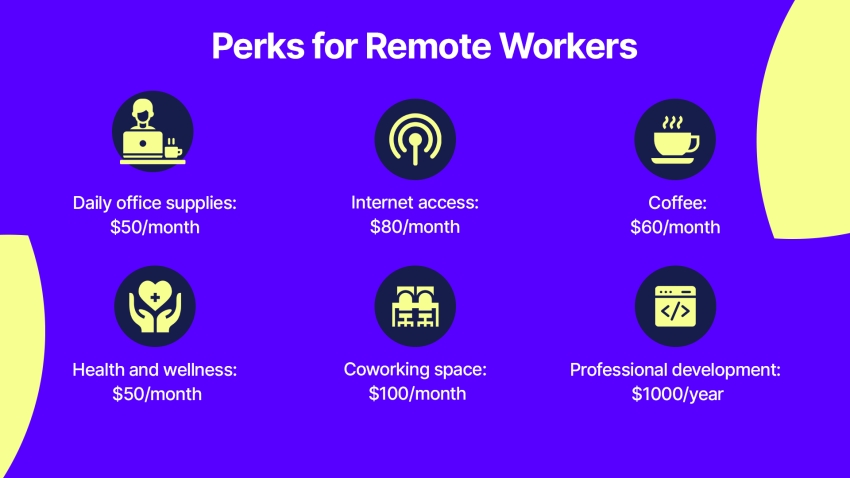
Global HR — 12 min

While it may not be the most glamorous task, effective expense management is essential for smooth-running businesses. International businesses can face additional challenges like calculating currency exchange rates, handling multiple accounts, and managing tighter timelines. Many companies are using outdated ways to reimburse their employees. Employees pay out-of-pocket, collect receipts, and turn in expense forms — a time-consuming and error-prone process.
If you're wondering if there is a better way to handle your remote employee expenses, this article is for you. We'll cover budgeting for remote-specific items, solutions for expense management challenges, and how to choose the right expense management accounting software.
Let’s kick things off by diving into the benefits of good expense management.
Expense management is the process of controlling, tracking, and processing employee expense reimbursements and corporate credit card transactions.
For remote teams where employees are scattered across the country or across the world, it can be incredibly challenging to keep track of everything. There are also remote-specific expenses to account for.
A good expense management system benefits your business in the following ways:
Improved workflow efficiency: Expense management helps you streamline the tedious tasks of expense tracking, approvals, accounts payable, and reporting. This gives you more time and resources to focus on core business activities.
Policy compliance: Having a standardized approach to expense reporting significantly reduces the chances of non-compliant or unauthorized spending and tax penalties.
Fraud prevention: A well-implemented expense management system can prevent fraudulent activities and unauthorized spending.

It’s important to understand possible expenses that come with remote work before you hire remotely. You can stay ahead and properly budget for remote team members.
Let’s take a look at four employee expenses that are common for remote work and tips for managing them:
Travel and accommodation are a big part of remote expenses. Remote employees may need to travel occasionally for various purposes, such as meetings, conferences, client visits, or team-building activities.
Budget for these expenses in advance so your organization can control costs while your remote employees make meaningful connections.
Here are some practical tips for managing travel and accommodation expenses:
Set a clear expense policy: Your policy should define the allowed transportation methods, accommodation types, and spending limits to avoid confusion and overspending.
Use online travel platforms or corporate travel agencies: These resources can simplify the booking process and potentially secure better rates.
Ask employees to submit receipts ASAP: Having your employees submit receipts in a timely fashion helps maintain accurate expense records and quick reimbursements.
Remote team members need a well-equipped and comfortable workspace to focus on work.
Setting up a home office may require software, hardware (printers, computers, desks, etc.), product prototypes, and other industry-specific equipment.
Remember to budget for not only the initial setup but also the ongoing repair, replacement, or maintenance of office equipment.
Use these helpful tips for managing home office setup expenses:
Establish a stipend: Consider providing a stipend for home office setups, allowing employees to purchase necessary equipment or upgrade their existing setups as needed.
Provide guidelines for hardware and software selection: Offer guidelines for selecting suitable hardware and software for home offices. This guarantees compatibility, productivity, and standardized tools across the remote workforce.
Come up with a process to solve tech issues: Implement a process for addressing technical issues, including replacements and maintenance. Remote team members can quickly solve their problems in this way.
Remote perks boost morale and help your employees feel valued and connected, no matter where they are.
Remote perks can include budgets for snacks, organizing virtual team lunches, offering access to local fitness programs, and more. You can proactively budget and manage these expenses by:
Conducting surveys or open discussions: Understand what perks your remote team members would appreciate so you can plan for these expenses in advance.
Exploring virtual perks: Instead of in-person activities, explore virtual alternatives. This helps you budget for vouchers that remote employees can redeem at their convenience.
Collaborating with local partners: Partner with businesses such as restaurants or gyms in the areas where your remote employees are based to get discounts.

Remote work often involves project-based assignments and collaborations. These one-off or recurring projects involve marketing initiatives, new product development, events, and get-togethers.
Use the following tips to effectively manage expenses for projects:
Set project-specific budgets: Establishing project-specific budgets ensures that expenses are allocated appropriately and stays within your planned amount.
Use project management software: Project management software helps you track and manage project-related expenses in one place. It can also help you monitor expenses in real-time.
Document expenses: Documenting project expenses helps you analyze spendings. You can also get valuable insight for future budgeting and decision-making.
When creating your company’s remote expense management policies, you’ll want to anticipate challenges that can pop up. Let's take a look at common expense management problems you can stay ahead of.
Going through a high volume of expense reimbursements can be a frustrating task. Processing reimbursements can feel never-ending when you sift through approval request and batches of receipts.
On top of that, cross-border payments can add delays. Tight timelines make it even more challenging to reimburse remote employees or transfer funds to overseas accounts.
As a result, you face the possibility of late payments, dissatisfied employees, and strained employee-employer relationships. That’s why it’s crucial to make payments promptly, as delays in employee reimbursement negatively impact employees’ productivity, engagement, and trust in the organization.
Accurately tracking expenses across multiple accounts can be complicated. Company credit cards and project-specific accounts can make expense tracking even harder.
Tracking expenses is easier when you have a comprehensive view of your organization's expenditures. Without a centralized system in place, managing expenses can be confusing, erroneous, and inefficient. Organizations also miss the opportunity to analyze spending patterns, brainstorm how to save costs, and make informed financial decisions.
Tracking and managing expenses from multiple accounts can be time-consuming, but it doesn't have to be. A centralized platform with an integrated expense management solution can make expense management much easier.
Dealing with foreign spending charges includes navigating currency conversions, fluctuating exchange rates, additional fees, and varying tax regulations.
Currency conversions can lead to discrepancies in recorded amounts, making it difficult to reconcile accounts and budgets. Fluctuating exchange rates further complicate matters, as the value of expenses can vary significantly over time. Additional fees and varying tax regulations in different countries add another layer of complexity to managing foreign spending charges.
Proactively addressing foreign spending charges is key to maintaining accurate financial records and ensuring compliance with international regulations.

Since remote operations tend to be are decentralized, it’s much more difficult to reconcile and categorize remote employee expenses. You need to handle different currencies, languages, and transaction systems since your team members are located in different regions.
To stay ahead of all the challenges mentioned above, you want to find the right solution to streamline remote expense management. For example, a Global HR platform automates expense tracking, approval workflows, and expense reports, making it easier to manage and control remote expenses.
To find a solution that's right for you, make sure your software has the following features:
When it comes to choosing an expense management software, a centralized documentation feature is a must-have. Centralized documentation relieves you from the hassle of dealing with a mountain of scattered documents and receipts from different countries. A good platform will store all your expense-related documents, including receipts and invoices, in one place. As a result, you can easily find records whenever you need, and avoid the risk that you’ll overlook any crucial piece of documentation.
Having full visibility of all expenses will keep you informed and in control of your remote team’s spending, no matter where they are.
So pick an expense management software that allows you to oversee and manage your remote employees’ expenses in real time.
An excellent choice is an expense management platform equipped with a real-time mobile app. For example, Remote’s mobile app lets you easily track your team’s expenses on the go from your mobile device so that each expense is promptly submitted for approval.

Payroll integration is a big one. For remote operations, it’s essential to choose an expense management software that seamlessly integrates with your payroll system.
This integration not only saves you the trouble of doing manual calculations and potential miscalculations, but also simplifies the overall global payroll management process.
Connecting expense reimbursements with your payroll system gives you an automatic system that accurately records all transactions and reflects them in employees’ pay stubs.
One of the biggest headaches in remote expense management is ensuring global compliance.
Having software that efficiently handles foreign spending charges and taxes is invaluable, especially when you have employees in foreign countries. It takes the burden off your shoulders by automating currency conversions and keeping you up-to-date with international regulations.
Remote has a team of local experts to ensure compliance for all global compensation and reimbursable expenses. With knowledgeable specialists on your team, you can trust that your remote operations stays compliant.
For international businesses looking for a seamless expense management process, check out Remote Global HR. Additionally, you can track expenses, monitor team spending, and approve reimbursements on the go with Remote’s mobile app.
Learn more about how Remote makes it easier to hire globally and manage expenses. You can join countless businesses worldwide that trust Remote for efficient and compliant expense management.
Subscribe to receive the latest
Remote blog posts and updates in your inbox.